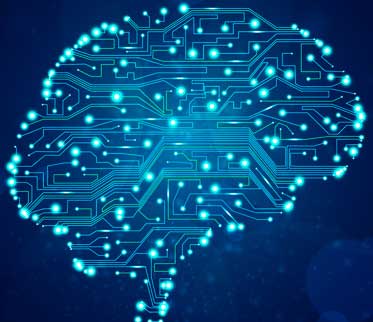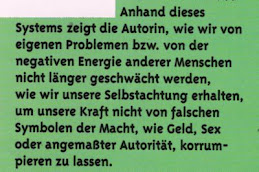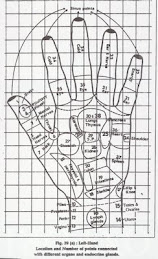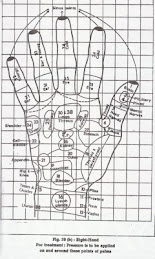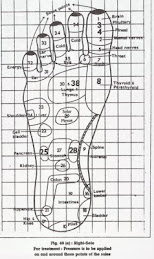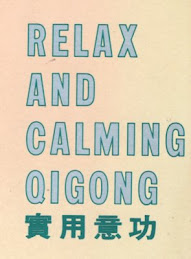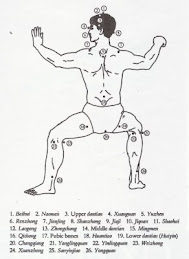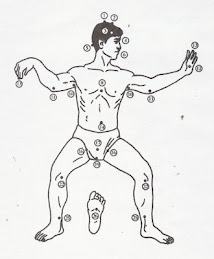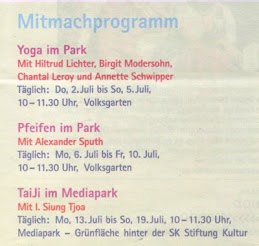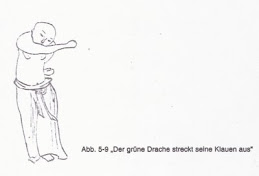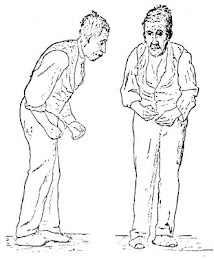Neurobiologische Forschungsergebnisse bestätigen das uralte psychologische Selbsthilfe-System der Achtsamkeitsmeditation: Der Mensch kann mit Hilfe seines Verstandes ungewünschte durch gewünschte Funktionsweisen seines Hirns ersetzen. - Wie formulieren es die Neurobiologen? -
Wenn die dopaminabhängigen Schaltkreise des Hirns schlecht oder gar nicht mehr funktionieren, kann das biologische Wesen "Mensch mit Parkinson-Symptomen" in eigener Initiative und Kompetenz neue neuoronale Verschaltungen generieren, die die Aufgaben der ausgefallenen Schaltkreise ganz oder teilweise ersetzen. Parkinson wird nicht kuriert, die heftigsten Folgen der Symptomatik werden jedoch vermieden.
Zum Thema "Plastizität des Hirns" werdem die
Schriften von Prof. Gerald Hüther empfohlen.
Wie soll das funktionieren?
Clement Meadmore fasst wie folgt zusammen: "Das Gehirn ist so programmiert, dass es gleichförmig sich wiederholende Aufgaben erledigt, um den bewusst tätig werdenden Verstand von der trivialen Arbeit zu entlasten, tausende von meist unbewussten Funktionen kontrollieren zu müssen. Nur ein geringer Prozentsatz dieser Aufgaben ist bewusst erlernt, und ein noch geringerer Prozentsatz ist in dem dopaminabhängigen Teil unseres Hirns gespeichert. Sobald die Verantwortung für die fehlerhaften Anweisungen übernommen worden ist, die in diesem Teil des Hirns abgelegt sind, können die korrigierten Anweisungen wiedererlernt und in einem nicht dopaminabhängigen Teil des Hirns eingegeben und abgelegt werden. Diesen Vorgang setzen gesunde Teile des Hirns automatisch in Gang in Beantwortung einer bewusst erlernten Handlung. Das Hirn hat ausreichende ungenutzte (redundante) Kapazitäten um es möglich zu machen, dass alles, was von defekten Schaltkreisen betroffen ist, zu den nicht dopaminabhängigen neuronalen Schaltkreisen verschoben wird."
Sie glauben kein Wort? -
Schauen sie sich die
Videos in diesem blog vom wieder erlernten, lustig-lockeren Gehen an.
Der Blogger hat nach Meadmore's Anweisungen trainiert. Seit 2011. Die beiden Videos sind erst der Anfang.
Das Inhaltsverzeichnis der kleinen Schrift Clement Meadmore's hat der Blogger für euch hier übersetzt: Der Text seiner Anweisung ist brilliant und geschliffen formuliert,
vgl Anlage. Eine Übersetzung muss jeder für sich selbst erledigen.
Parkinson überwinden
Wie erschaffe ich neue Schaltkreise im Hirn. die unabhängig von Dopamin funktionieren ?
Parkinson
Opfer
Verantwortung
Theorie
- Kleinheit
- Absicht und Automatik
- Verstand und Körper
- Das Gehirn umgehen
- In Kontrolle des An-/Aus-Schalters
Anweisungen zur Erschaffung einiger wichtiger Hirn-Schaltkreise:
- Gehen
- Schreiben
- Sprechen
- Zittern
Zusammenfassung (siehe obige Übersetzung)
Wo ist nun der Haken?
Die Umerziehung, d.h. das Umschaltten auf den neuen Schaltkreis, funktioniert nur, wenn der Verstand ohne Levodopa-Medikation, d.h. ohne synthetischen Dopaminersatz arbeitet. Denn die Medikation bewirkt eine Maskierung des Symptoms, d. h. eine Verzerrung.
Ohne Demaskierung keine Wahrheit, also auch kein Erfolg. q.e.d.
Keine Ausrede erlaubt!
Die Bedingung der Abwesenheit von L-Dopa-Medikation für den Erfolg der "Umerziehung des Hirns" liefert jedoch keinen Vorwand für eine Ausrede. Meadmore empfiehlt eine Minimierung der Tabletteneinnahme. Der Blogger empfiehlt das Konzept des täglichen L-Dopa-Urlaubs von mittags bis zum nächsten Morgen. Die Übungsszeit für die Symptom-Erkenntnis, -Verantwortungsübernahme, -Imitation und danach das Erlernen eines begrenzten Substituts sollte dann auf den späten Nachmittag - nach Abklingen der täglichen Entzugserscheinungen - verlegt werden. - Und: Rückschläge gibt es immer wieder. Das sollten wir von den Profi-Sportlern kennen.
Nicht aufgeben - das ist der Weg zum Umschaalten auf dopaminunabhängige neuronale Schaltkreise des Hirns!

OVERCOMING PARKINSON’S
How to create new brain circuits
that don’t depend on dopamine
by Clement Meadmore
In the past, dopamine substitutes were thought to
be the only way to handle Parkinson's symptoms. Yet dopamine is only used by a
small part of the brain specializing in repetitive movements. When dopamine
production decreases, the control of movement becomes much less precise.
Because the brain has considerable redundancy (unused areas) it is
possible to use other non dopamine dependent parts of the brain to perform the
same tasks. One does this by learning to create an exact replica of the symptom
in order to take charge of it, and relearning the activity in its correct form
until it can be committed to a healthy part of the brain This can be practiced
by alternating between the two forms of movement deliberately. In case all this
sounds too simple to be taken seriously, let us clear up a few misconceptions
which could be getting in the way.
Parkinson’s
There is no such thing as Parkinson’s. Parkinson's
is a word used to refer to two or more of a group of real symptoms and a
deficiency of dopamine. The symptoms can be handled regardless of dopamine. In
order to handle symptoms we must create a space between us and them. Sentences
like “I am a parkinsonian” create no space at all. Here the person is the
illness, this is a life sentence! “There are symptoms” would be much
better.
Victim This one can really get in the
way. Life is not inherently fair or unfair. ”Why me?” is a meaningless
question, implying special privilege.
If we choose to go skiing we accept the possibility
of a broken leg, so it makes no sense to regard oneself as a victim of skiing.
The same goes for life. One may be the recipient of all sorts of things but a
recipient is not the same thing as a victim. One cannot be a victim; one can
only regard oneself as a victim thus abdicating responsibility.
Responsibility
We are not using this word to imply blame. We are
talking about taking responsibility, which is what a responsible person does.
Theory
Smallness
The symptoms, which we are now able to observe as
separate from ourselves, all suggest a shrinking from life. Walking with
small, shuffling steps, talking with a small, slurred voice,
writing small and illegibly, and the small, repetitive movements
of tremors. To counteract these symptoms we must practice doing all these small
activities on a large scale. This includes embracing life on a large scale.
Intention and Automaticity
There are several ways to approach these problems.
One is to compensate for the brain's deficiencies with synthetic dopamine,
Sinemet etc. But the problem then is that we reduce the brain's incentive to
establish, new circuits to replace the mal-functioning dopamine driven
circuits. The alternative is to keep the medication to a minimum. This way the
masking effect of the medication will be incomplete, thus reminding us to use
as much intention as is needed to overcome the symptoms.
As children we learned to walk, talk and use our
hands with grace and precision. Having learned these abilities, we allowed them
to run on automatic. This works just fine until the brain loses certain
cells.
Then we must begin again, learning to do
consciously what we have been doing automatically. This means re-learning the
activities that have been affected and keeping them conscious until the
brain manages to hook up a non-dopamine circuit, at which point intention
can be relaxed.
Fortunately all the symptoms we are dealing with
have in common their accessibility to conscious control. Even balance can be
learned. After all tight-rope walkers balance consciously, not automatically.
Walking around consciously, like a tight-rope walker may require a lot of
intention compared to walking on automatic, but it sure beats falling over!
Mind and Body
Experimentally, the mind can be tricked into
erasing symptoms. It's called
the placebo effect. A patient is given a fake pill
and told it is the latest high tech cure. Sometimes the patient makes a
miraculous recovery. Obviously, he has been tricked into curing himself. We
can't trick ourselves, but it does prove the feasibility of using our
creativity to handle symptoms.
Speaking of real symptoms, Michael Talbot, in his
book, The Holographic Universe, lists conditions that have proved
responsive to placebo treatment: Angina pectoris, migraine headaches,
allergies, fever, the common cold, acne, asthma, warts, various kinds of pain,
nausea and seasickness, peptic ulcers, psychiatric syndromes, such as
depression and anxiety, rheumatoid arthritis, diabetes, radiation sickness,
PARKINSONISM, multiple sclerosis, and cancer. The implication is that the mind
is capable of erasing all of these conditions and, probably, many more.
Someone wrote to me asking where he could buy some placebo! That would be like
trying to tickle yourself.
Ideally, we should be able to heal ourselves with
full awareness and responsibility.
We are not suggesting that the symptoms are not
real and, therefore, susceptible to positive thinking. On the contrary, we are
talking about the creative ability to erase symptoms. By the way I am not claiming
to have a cure, but a means to permanently erase the symptoms is not a
bad start.
Bypassing the brain
We can take charge of all of our actions. If
the brain fails to perform to our expectations, we can bypass the
brain and control the body directly.
In his book Beyond the quantum”, Michael Talbot
describes some of the many cases on record of people with hydrocephalus or
water on the brain, which is a condition characterized by an abnormal build-up
of cerebrospinal fluid in the brain” in one case a CAT scan revealed that a
student who had an IQ of 126, had gained a first-class honors degree in
mathematics, and functioned in all other ways as completely normal, had
virtually no brain. Lining his skull was only a thin layer of brain cells a
millimeter or so thick, and the rest of his cranium was filled with
cerebrospinal fluid.”
More than 600 of these cases have been studied, 50%
of whom live normal lives and have IQs of over 100. These people must be bypassing
their brains all the time!
Instead of telling the mind to tell the brain to
order the body part to move in a certain way, we can actually tell the body
part how we want it to move without involving the brain at all! For
example, we usually sign our names automatically and write semi-automatically,
but if we had to forge someone-else’s signature we would have to intentionally
form the letters. We did this when we first started signing our names but after
a while the brain established a circuit to do it automatically. When this part
of the brain malfunctions we have to program another part of the brain, by
communicating directly with the hand, until an unused part of the brain picks
up the new pattern.
Controlling the On/Off Switch
What if symptoms had on/off switches and we could
simply turn them all off and be done with it? Actually, it is almost that
simple, but bear in mind that like starting and stopping a car, on and
off are equally important skills, and both have to be learned. And we learn
them by bypassing the brain.
One day a school friend of mine arrived home with a
terrible limp. When his mother asked him what had happened, he said Nothing
happened, I’m just walking like Johnny.” His mother explained: That’s not nice,
Johnny’s a cripple.” and my friend aid, “Do you mean to say he’s a cripple, and
he can walk like that! “
Turning the switch on, means doing exactly
what the symptom does, intentionally. In other words, we must create
the symptom with intention instead of automaticity. Victor Frankl,
in his1946 book Man’s Search For Meaning, an Introduction to Logotherapy,
called this paradoxical intention’. In fact he coined the phrase in
1939. Turning a symptom on is certainly paradoxical! What Frankl had discovered
is that in order to turn a symptom off we must first learn to turn it on,
intentionally. Paradoxical intention really is that simple!
Turning the switch off means intentionally
creating the normal state.
Turning the switch on and off, then, necessitates
the degree of intention required to create the symptom exactly like the
automatic version. Also, the same degree of intention is required to
create the normal healthy condition; in both cases, bypassing the brain.
Two of the most important things to know about
driving a car (or doing anything!) are how to start and stop. We learn by
starting, stopping, starting, stopping, starting and stopping,
until we have compete control of the car or the on/off switch.
We are not just learning to turn the switch off; we
are learning to control the switch. This means learning to turn it off or
on. It means being willing to do both and to do them with full
intention.
Imagine that the mind is plugged into an input in
the brain marked automatic (the part that works on dopamine) and what we are
doing is to plug into an input marked intentional. Of course, we are not
pulling plugs, as in an old-fashioned switch board, it is more like a modern
board that uses switches instead of plugs. Unfortunately, these switches have a
tendency to slip back into automatic like an automatic camera which won't stay
on the manual setting. We need to exercise constant vigilance until the brain
becomes accustomed to its new circuit layout.
Manual initially requires more energy than
automatic did, but the energy requirement should become less as the new wiring
settles in.
To put all this in simple language, instead of telling
the brain to wiggle our big toe, we are telling the toe
how to wiggle. Actually we do this every time we do something for the first
time --- before a repetitive pattern is established.
In practice the aim is to overcome the symptomatic smallness
of walking steps and of voice and writing by practicing an increase of size:
walking faster and with longer strides, speaking louder and writing larger, and
all with conscious intention.
The desired improvements will persist for longer
periods each day. After two months, intention should only be required a few
times per day, at which time the new circuits are well on their way to being permanently
established. At this point there is a bonus: The newly automated activity
requires far less effort than before the new circuit was established.
If turning a symptom on does not feel right (and it
frequently does to some people), we do not need to! We only need to work on a
symptom when it appears. At that time we can take responsibility for it
(replicate it) until we are sure we are doing it and then turn it
off. So, we never need to turn, it on, we just wait for it to turn itself on.
Then mimic it.
We can obviously work on all the symptoms
simultaneously but, for a quick shot of confidence, we can concentrate on one
symptom at a time (see below) until a new brain circuit is firmly established.
The feeling of successful responsibility as we hit the ground running is
terrific. Now we know, without a doubt, that it is possible to create one new
brain circuit and therefore it must be possible to create as many as needed.
Instructions for creating some
specific brain circuits
Walking
Start by walking with an intentional shuffle until
it is exactly the same as the symptomatic shuffle, thus taking responsibility
for the shuffle. Next, control the legs directly to do a normal walk. (This can
only be done if the automatic brain circuit is not used). Until a new circuit
is established a little more effort will be required, not only to walk but to
direct the walking process consciously, as long as one remains responsible for
walking, the legs will perform correctly.
When the mind wanders, the old brain circuit is
likely to take over again and the process must be started again, including
taking responsibility for the shuffling walk. After a few days of this, another
part of the brain will begin to form a new circuit. This circuit will be
slightly less efficient than the old one in its prime, but more efficient than
the old one in its present state. As the new circuit settles in it will work
the legs for longer and longer periods before slipping back to the old circuit,
at which point a little conscious intention will be required to get the process
back on track.
After a few weeks this new circuit will be
established and it will be able to run the legs on automatic. Because this
circuit is not dependent on dopamine, it should work indefinitely.
Writing
The characteristic writing symptom is small and
scrawly and tends to get smaller towards the end of each line. Start by writing
the same sentence over and over, with the same smallness and crudeness, only do
it intentionally, taking responsibility for the symptomatic look of the
writing. When this look has been produced by a conscious action, change
to shaping each letter as though learning to write for the first time.
Make the activity of writing as intentional and
non-automatic as possible, in order to wrest this activity away from the
automatic brain circuit and make it an intentional, brain- bypassing activity.
It may be helpful to buy a simple instruction book
on simple calligraphy (not the script style that used to be taught in school).
Calligraphic writing is much more natural in terms of the way the hand muscles
work. Many calligraphic pens are available and they are well worth while
because they guide the hand in a simple basic clear style.
Write the same line over and over, making it
slightly larger each time until the page is filled. Now choose the best size
(get some opinions on this) and stick with it.
Speech
The commonly heard speech symptom is slurred and
almost inaudible. To take responsibility for this requires becoming conscious
of it (a tape recorder helps to make one objectively aware of the quietness and
slurred enunciation) and continuing to do the same thing intentionally. Once
this speech pattern has been intentionally replicated, switch to intentionally
creating a normal speech pattern, louder, slower and more clearly enunciated. A
speech therapist I know has come to the conclusion that loudness is by far the
most important factor. Speaking at a volume close to shouting is actually much
softer than it feels. The solution is to practice loud and get some opinions as
to what sounds right.
If attention wanders and the slurred speech returns
replicate it with intention and then, having bypassed the brain (because we
don't need the brain to help us speak that way) we can return to normal speech.
Gradually, the slur will recur less and less often and the new circuit will be
established. If the new speech pattern sounds a bit rusty, a speech therapist
would be helpful, but only after the new circuit has been established to some
extent. Working with a speech therapist should complete the establishment of
the new circuit.
Tremors
If any part of the body displays a tremor, take
charge of it by creating exactly the same thing intentionally. When we can
produce the tremor intentionally, (switch it on) at will, we can also switch
it off cease creating it intentionally. Here we are dealing with doing something
and not doing something. We don't need an elaborate brain circuit to not do
something. All we need is to take over responsibility for the tremor and
for the absence of tremors. In other words we must learn to take responsibility
for turning the switch off and on. (see Controlling the On/Off Switch’)
Eventually, after becoming skilled at controlling the switch, it will be
possible to turn it off and leave it off.
Summing Up
The brain like a computer is programmed to perform
repetitive tasks in order to relieve the conscious mind of the trivial work of
controlling thousands of, mostly unconscious, functions. Only a small
percentage of these have been consciously learned, and an even smaller
percentage are stored in the dopamine dependent area of the brain. Once
responsibility is taken for the faulty instructions stored in this part of the
brain the correct instructions can be relearned and fed into a non-dopamine
dependent area of the brain. This process is automatically instigated by
healthy areas of the brain in response to a consciously learned action. The
brain has sufficient redundancy that it should be possible to shift everything
from the affected circuits to non-dopamine- dependent areas.
Please send comments to Clement Meadmore, 260 5th
Ave., 6N, New York, NY 10001, cmeadmore@mindspring.com
